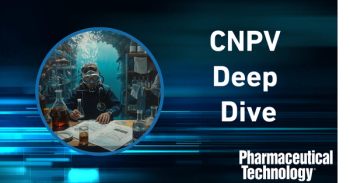
PTSM: Pharmaceutical Technology Sourcing and Management
- PTSM: Pharmaceutical Technology Sourcing and Management-10-09-2007
- Volume 3
- Issue 10
A Reality Check for FDA and the Pharmaceutical Industry
The public gives mixed reviews to the pharmaceutical industry and the US Food and Drug Administration for issues such as drug safety, timeliness in bringing drugs to market, and their role in addressing the high costs of drugs.
Public perception plays an important role in policymaking, the regulatory direction of the pharmaceutical industry, and the status of the pharmaceutical industry itself. The pharmaceutical industry and the US Food and Drug Administration received a reality check when they learned the public's opinions of their activites. Last month, American University's Center for Congressional and Presidential Studies (Washington, DC) announced results from a national survey assessing public views about the safety of prescription medicines, the Food and Drug Administration, and overall satisfaction with the US healthcare system (1).
"At a time when Congress is reviewing and debating legislation to strengthen the safety of prescription medicines and overhaul the FDA, this survey validates that drug safety is a real concern for the American public," said James Thurber, director of the Center for Congressional and Presidential Studies at American University, in a university release. "The survey shows some support for the concept of a Food and Drug Administration Revitalization Act; however, there is a clear desire and expectation among participants for regulators to balance speed of approvals with their responsibility of reducing safety risks."
The survey was conducted by the Mellman Group and Public Opinion Strategies on Sept. 4–6, 2007. Eight hundred adults were interviewed for the survey.
Geographic source of drugs. The issue of drug imports and the safety of products made abroad is now receiving a great deal of attention. The survey showed strong confidence in the safety of prescription drugs made and sold in the United States, with 88% of survey respondents reporting they were confident of the safety of drugs made in the United States. That confidence level drops off markedly for drugs made in Europe and Canada and sold in the US. Only 56% of respondents said they were confident about such products. This level falls even lower for prescription drugs made in India and China and sold in the US. Just 14% of survey respondents said they were confident of these products.
Overall public perception of FDA. The public's view of FDA was mixed. On the positive side, survey respondents regarded FDA as the most trustworthy group of four major groups: FDA, consumer advocate groups, Congress, and pharmaceutical companies. Survey respondents, were less enthused about the performance of the FDA. Only 53% of survey respondents rated the FDA as excellent or good, and 47% rated it as only fair or poor.
Understanding of FDA's role in drug approvals. The survey showed the public's uncertainty about FDA's role in the drug-approval process. Only 54% of survey respondents believe that all prescription drugs sold in the US have been approved by FDA, and 37% say just some of them have received approval.
The survey also addressed the difficult balance between safety and risk in approving new drugs. Opinions about how well FDA handles that balance were mixed. Almost three-fourths (72%) of survey respondents say FDA's most important goal when approving new drugs is to make sure a drug carries no risk or serious side effects before it is authorized for marketing. Only 23% of respondents said they would want new drugs available as fast as possible, even if there may be some risk to patients.
Despite the public's strong leaning toward risk-aversion in the drug-approval process, it still thinks that the drug-approval process is too long. Forty-one percent of respondents say it takes the FDA too long to approve a drug and allow it to be sold to consumers. Only 34% say it is about right, and 18% think the process is not long enough.
FDA funding and the public. There public is also confused about where FDA receives its funding: 54% say it is from the government, 20% from pharmaceutical companies, and 17% say it is from both the government and pharmaceutical companies.
The public is evenly divided on the issue of user fees, with 47% in favor of user fees, and 46% opposed to pharmaceutical companies paying user fees to FDA.
Public's view of the cost of drugs. The public seems unconvinced that the high cost of new drugs stems from the high cost of research and development. The survey showed that the public perceive that the biggest contributor to the cost of prescription drugs is the profit margin (43%). Twenty-eight percent say its the cost of marketing, and only 25% say it is the cost of research.
The public and Congress. Public skepticism about Congress's ability to improve the drug-approval process is very high. Only 6% have a lot of trust in Congress to pass "common-sense laws" governing FDA approval of drugs, and 20% have no confidence, according to the survey. Overall, 50% have a lot or some confidence, but 49% have not much or no confidence in Congress. Despite these low opinions of Congress, the public wants Congress to improve the drug-safety process. Two-thirds of survey respondents said they would want Congress to do more to strengthen FDA's ability to ensure the safety of prescription drugs, compared with 30% who would want Congress to let FDA continue on its current course.
Policymaking and the public. The issue of drug safety is a recurring theme of the publication. More than three-quarters of survey respondents say prescription-drug safety is at least somewhat important to them in deciding their vote for the 2008 presidential election. Thirty-nine percent rank it as very important, 10% qualify it as one of the two most important issues, and 28% say it is somewhat important. Roughly one-quarter (21%) say that it is not important.
Drug safety and public experience. The survey also sought to measure the public's personal experience as it related to drug safety. Nearly three-fourths (74%) of survey respondents said they had taken a prescription drug during the past year. Roughly two-thirds (66%) of those that had taken a prescription drug said that they had been informed by a doctor or pharmacist of potential side effects. The overwhelmingly majority (69%) of respondents had not suffered a negative side effect from a prescription drug, and 30% had.
References
1. "Prescription Drug Safety National Survey," Center for Congressional and Presidential Studies, Washington University, Washington DC, Sept. 2007
Articles in this issue
about 18 years ago
Agreements and contractsabout 18 years ago
Expansionsabout 18 years ago
Mergers, acquisitions, and restructuringabout 18 years ago
CMOs Join Pharma Facility Swap Meetabout 18 years ago
PeopleNewsletter
Get the essential updates shaping the future of pharma manufacturing and compliance—subscribe today to Pharmaceutical Technology and never miss a breakthrough.





